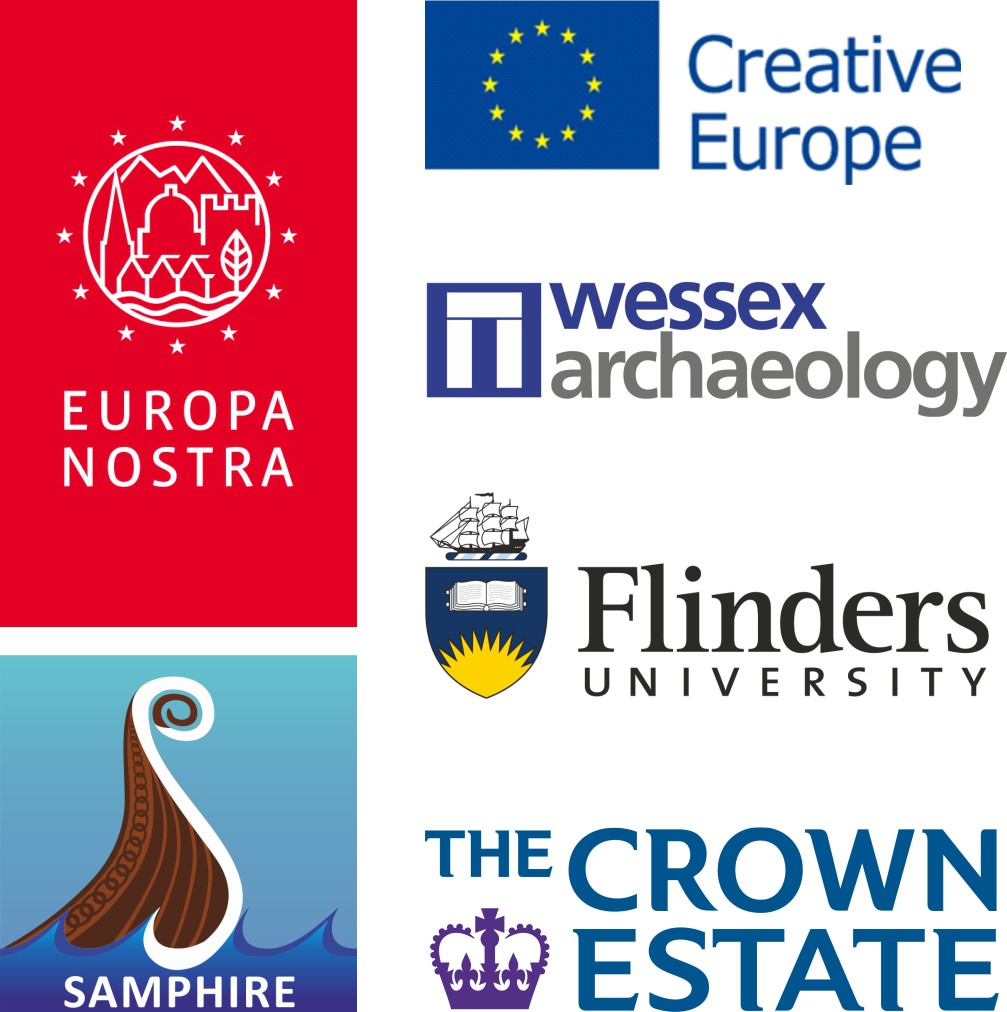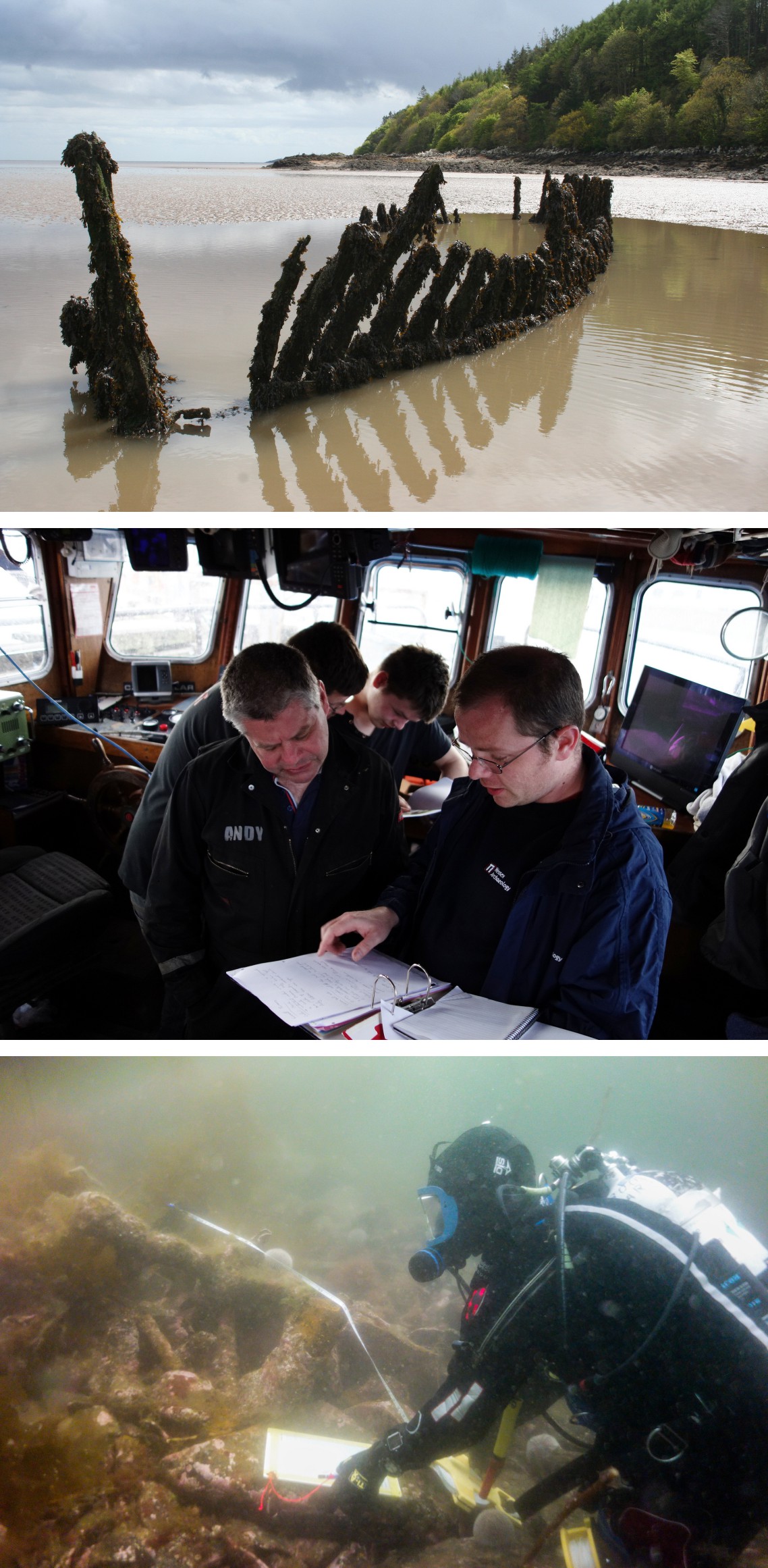
Wessex Archaeology is delighted to announce that SAMPHIRE, our marine heritage project, which used a unique crowd-sourcing method to map archaeological sites along the west coast of Scotland, has won the prestigious European Union Prize for Cultural Heritage/Europa Nostra Awards 2017. SAMPHIRE, which was funded by The Crown Estate, was devised and run by Wessex Archaeology, using the expertise of Dr Jonathan Benjamin, and former Wessex Archaeology Manager John McCarthy who is now based with Dr Benjamin at Flinders University in South Australia.
Our award win comes in the Education, Training and Awareness-raising category, since the project team worked with local communities along Scotland’s west coast to help find previously unknown archaeological sites in the marine environment. This was done through face-to-face meetings with harbour masters, scallop divers, recreational divers, fishermen and others, as well as with local residents in the coastal towns and villages. Once the identified locations had been recorded, the most promising were visited by teams of professional and volunteer archaeological divers to verify the information received.

The European Union Prize for Cultural Heritage/Europa Nostra Awards was launched by the European Commission in 2002, and has since been run by Europa Nostra. It celebrates and promotes best practices related to heritage conservation, research, management, voluntarism, education and communication. In this way, it contributes to a stronger public recognition of cultural heritage as a strategic resource for Europe’s economy and society. The Prize is supported by the Creative Europe programme of the European Union. Independent expert juries examined a total of 202 applications from 39 countries across Europe, and chose just 29 winners in a number of different categories.
Chris Brayne, Chief Executive of Wessex Archaeology, said:
"We are delighted to have been announced as a winner of this prestigious European prize which celebrates best practice in heritage conservation, research, management, education and communication. This was an innovative, collaborative, project which involved over 100 members of the local community along the coast of West Scotland. We were very fortunate in being able to partner with a great many local and national organisations including community dive clubs and scientific partners such as the Scottish Association of Marine Science".
Wreck sites recorded by the SAMPHIRE project include:
• The Yemassee (an American cargo ship lost in 1859)
• The schooner Medora (lost in 1860)
• The Falcon, a previously unlocated paddle steamer built in 1860 and lost in 1867 with great loss of life
• The Lady Middleton (a schooner lost in 1868)
• The Iris (a brig lost in 1874)
• The Lord Bangor (a wooden ship lost in 1894)
• The Cathcartpark (a steamship lost in 1912 near the island of Iona)
• The Hersilla (an armed iron naval yacht lost in 1916)
• The SS Viscount (lost in 1924)
• The Sheila (an early MacBrayne ferry built in 1904 and sunk in 1927)
• The Mafeking (a salvage vessel lost in attempts to recover the Sheila)
• The SS George A. West (a wooden steam trawler lost in 1927)
• The Thalia (a steam yacht lost in 1942)
• The Carrigart (a steam drifter lost in 1933).
Full details of the project’s discoveries are available online, and reports for each year contain detailed accounts of the discoveries made. These can be seen on the SAMPHIRE website here. Data gathered during the project will be archived with Historic Environment Scotland, and also be made available through their Canmore website, ensuring that the knowledge passed on is permanently stored and accessible for future generations.
Chris and the SAMPHIRE team will be presented with their award by EU Commissioner Navracsics and Maestro Placido Domingo at an event in Finland on 15 May 2017.